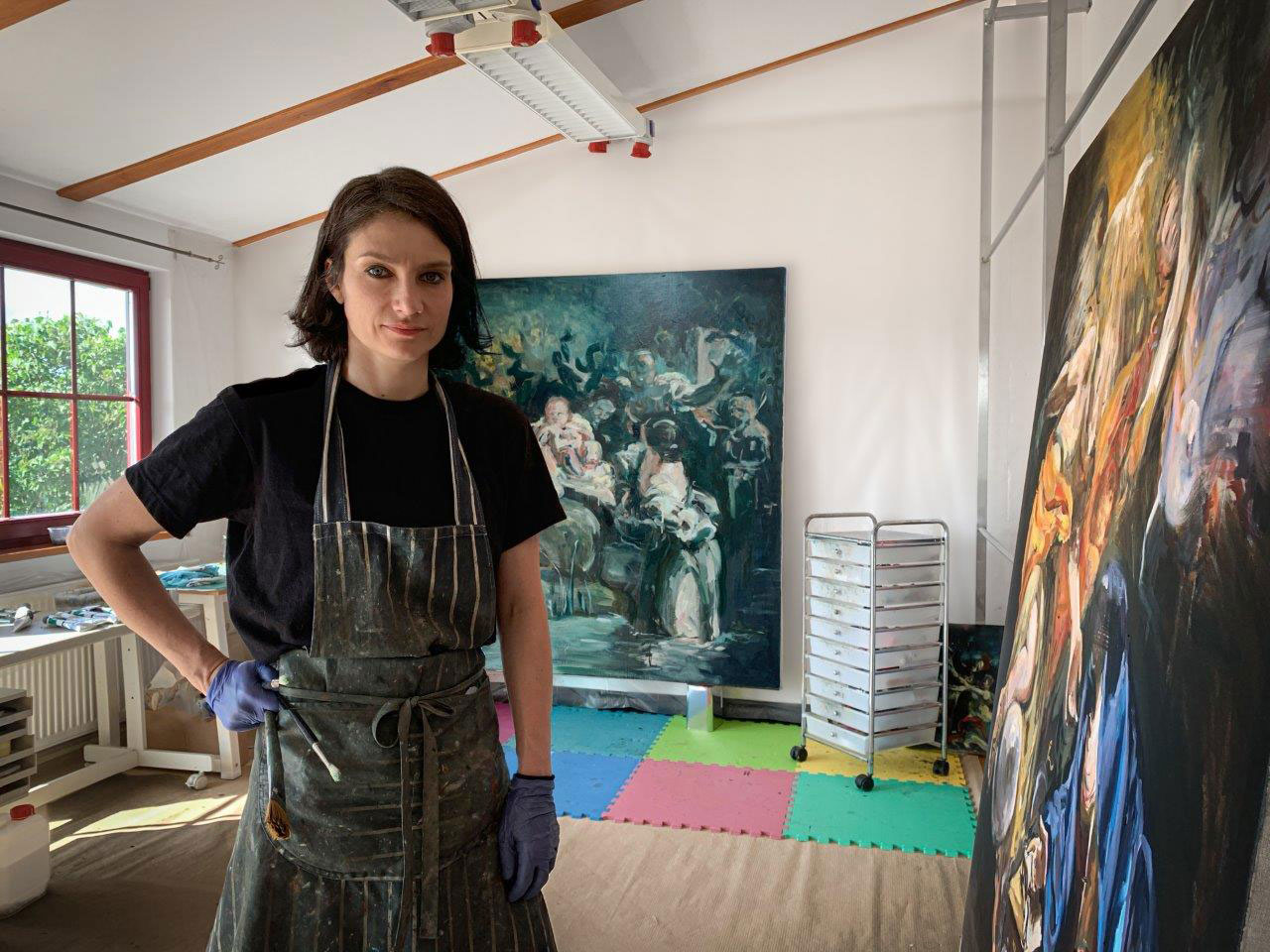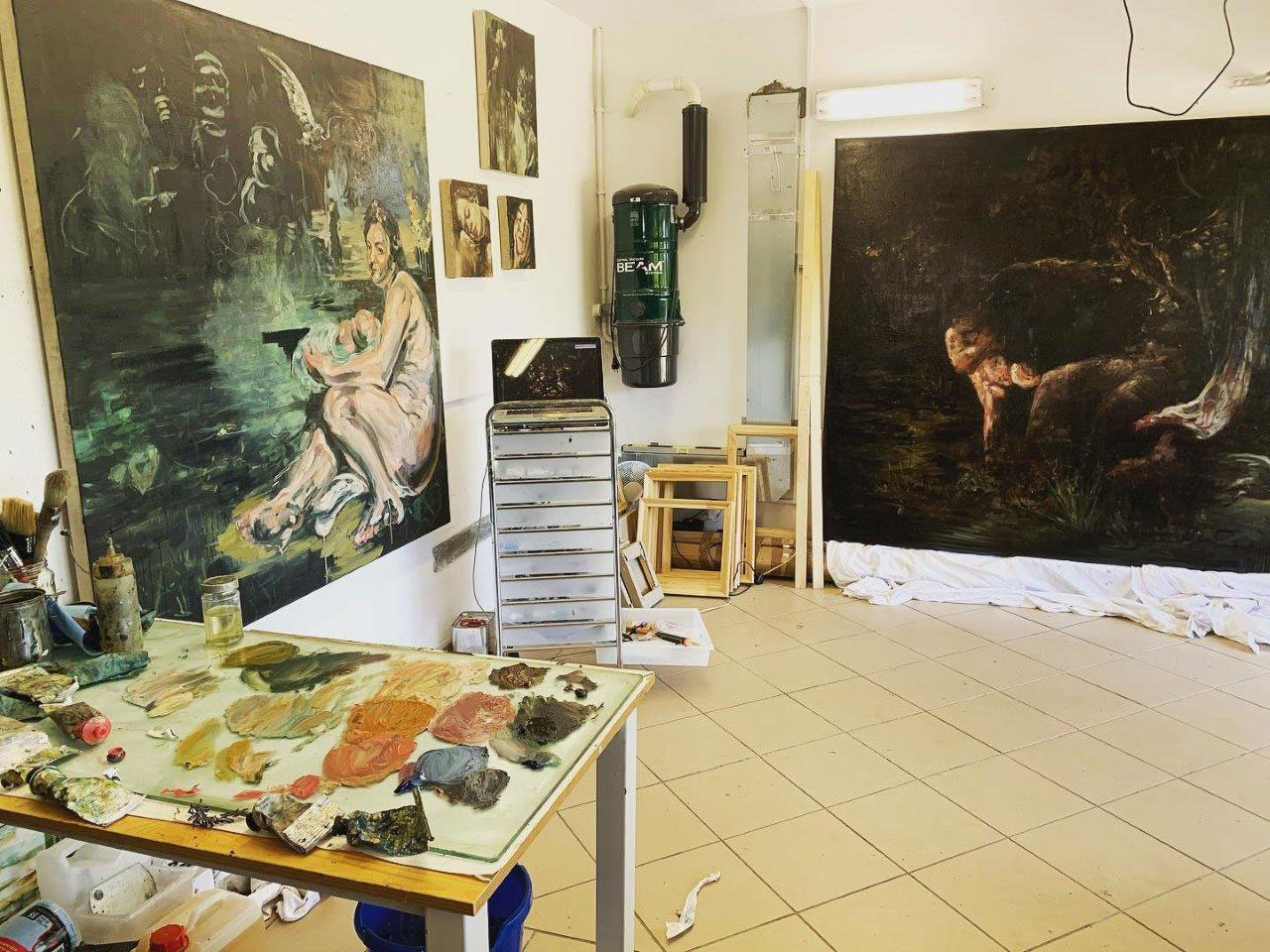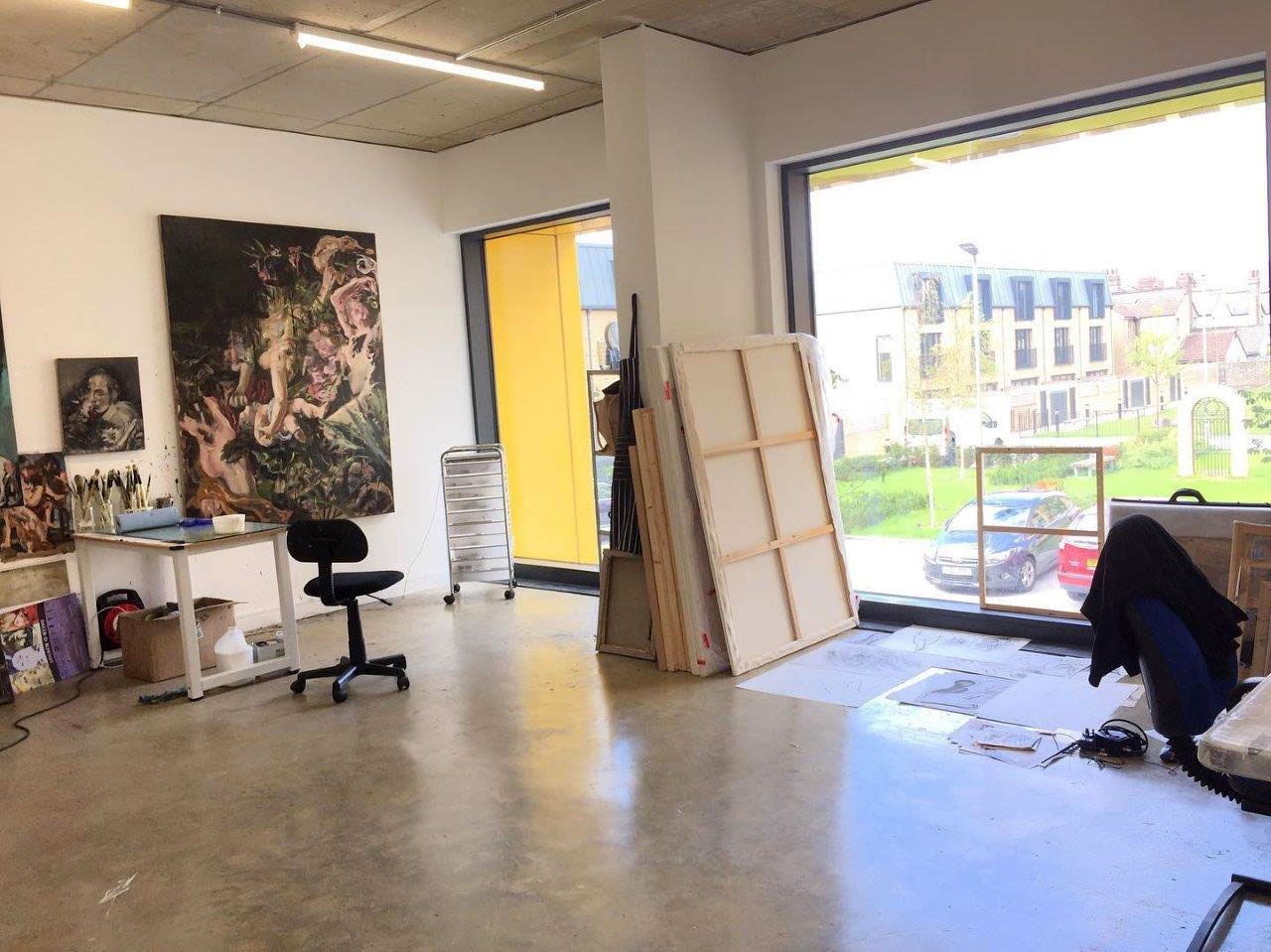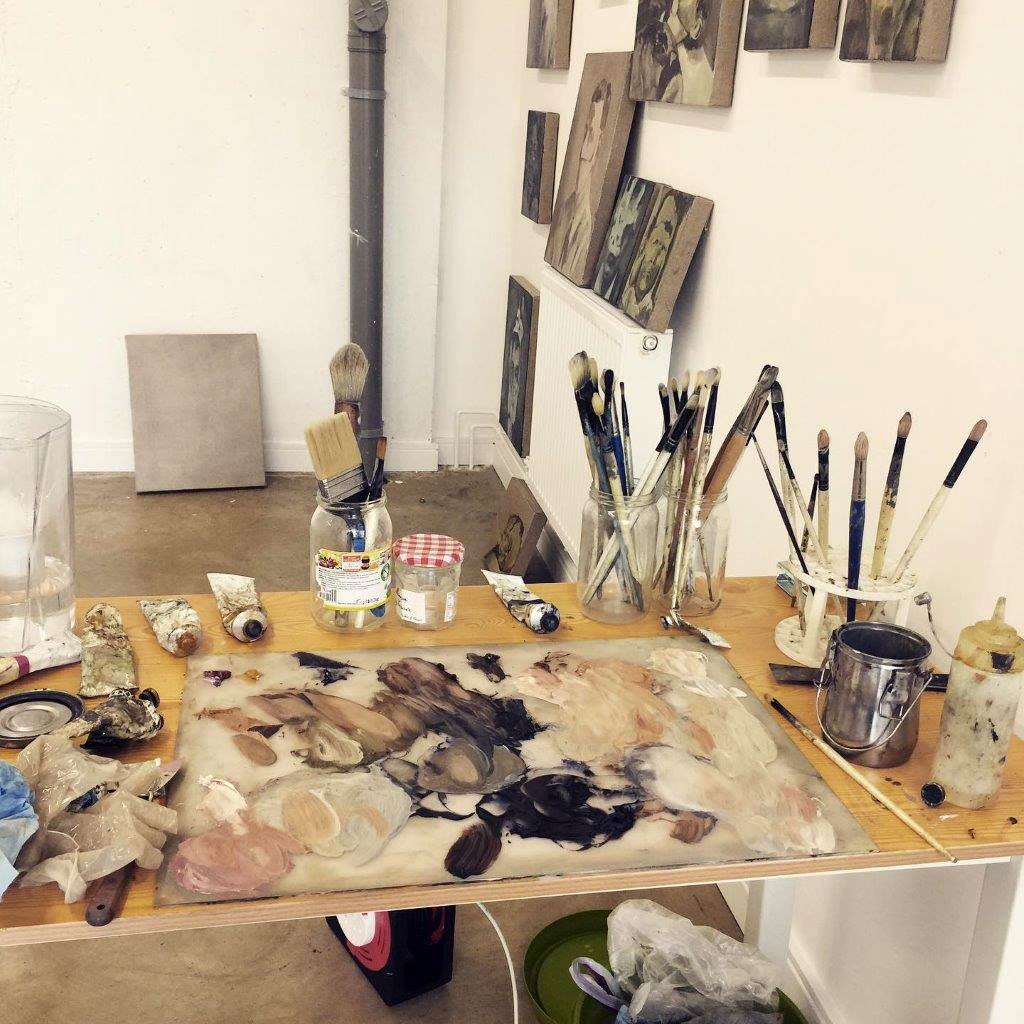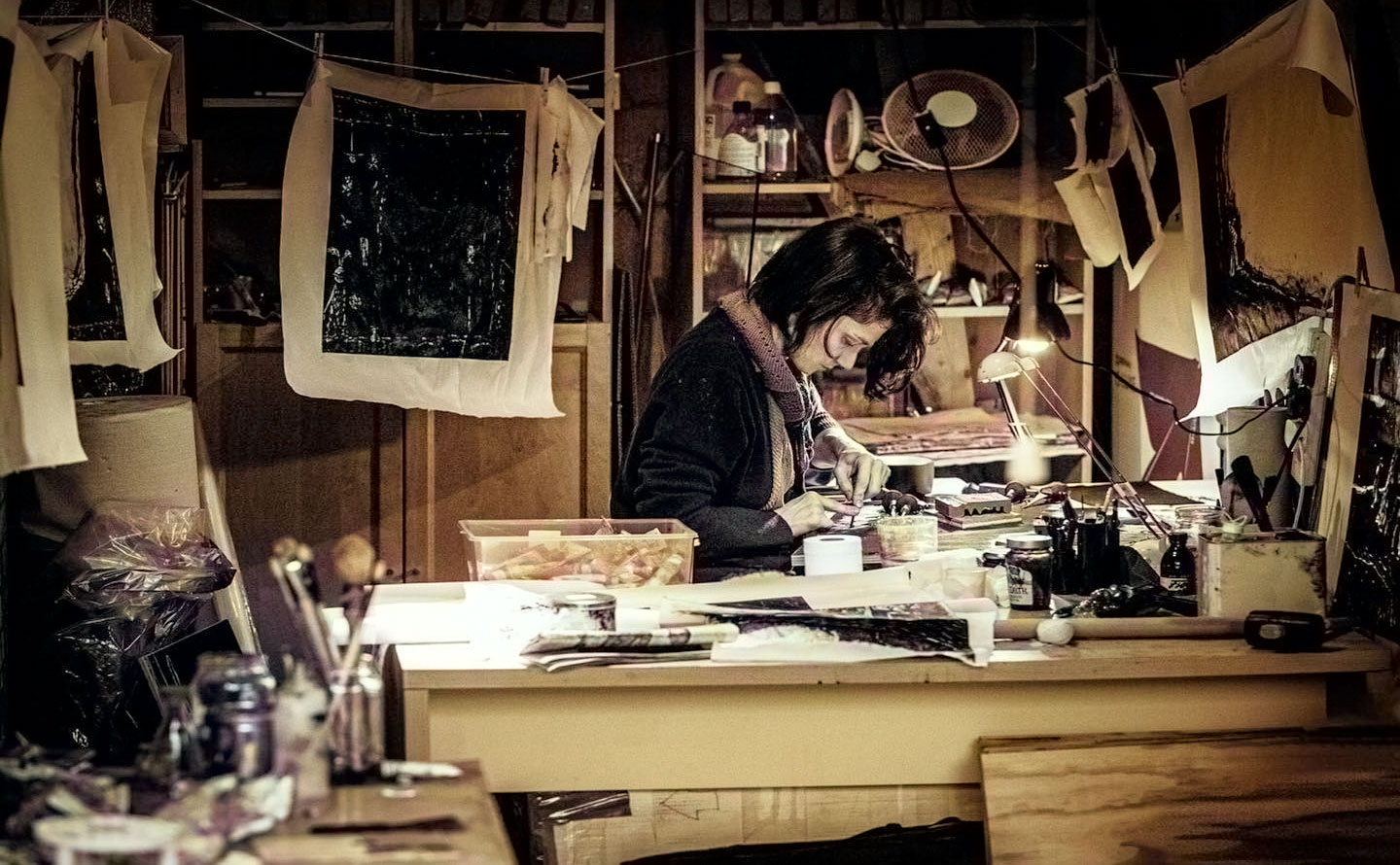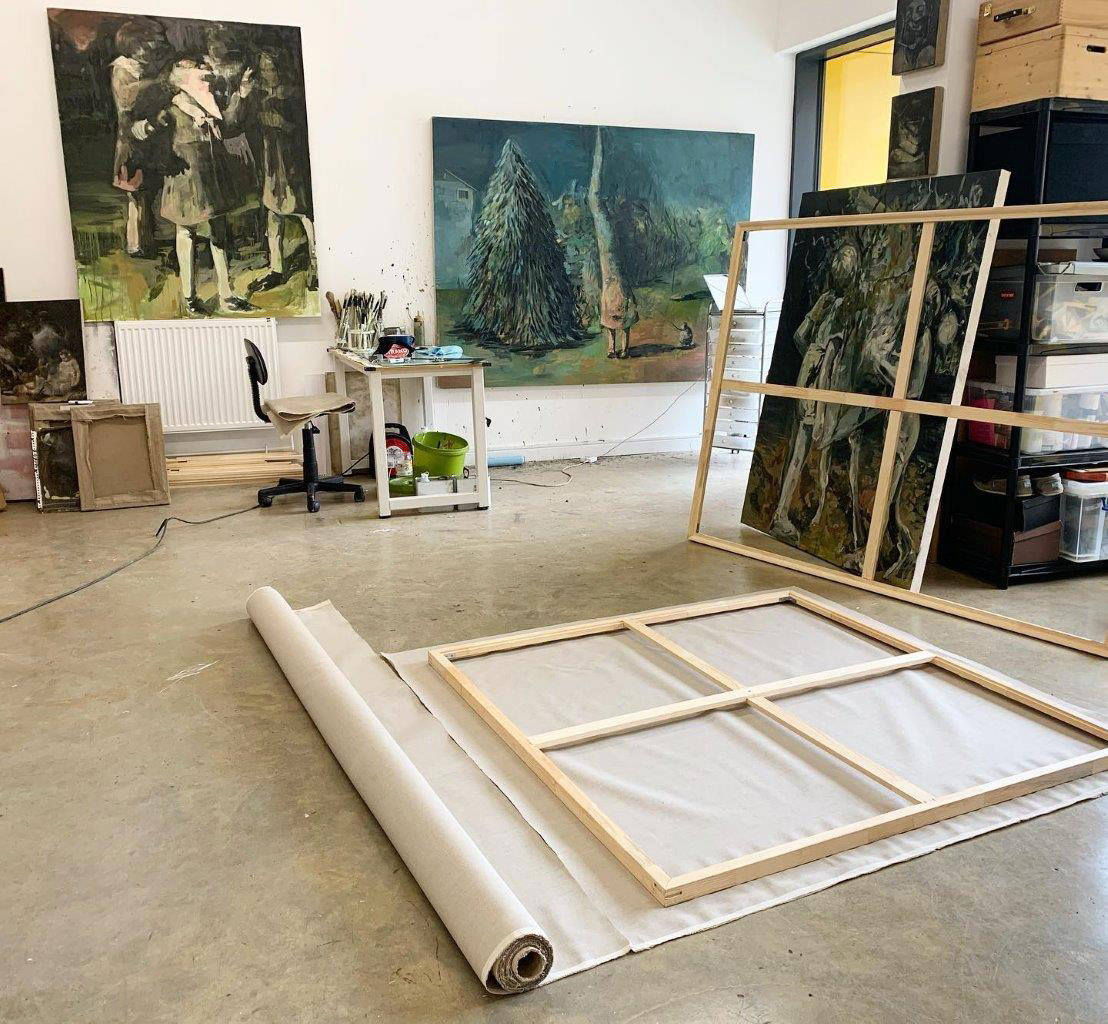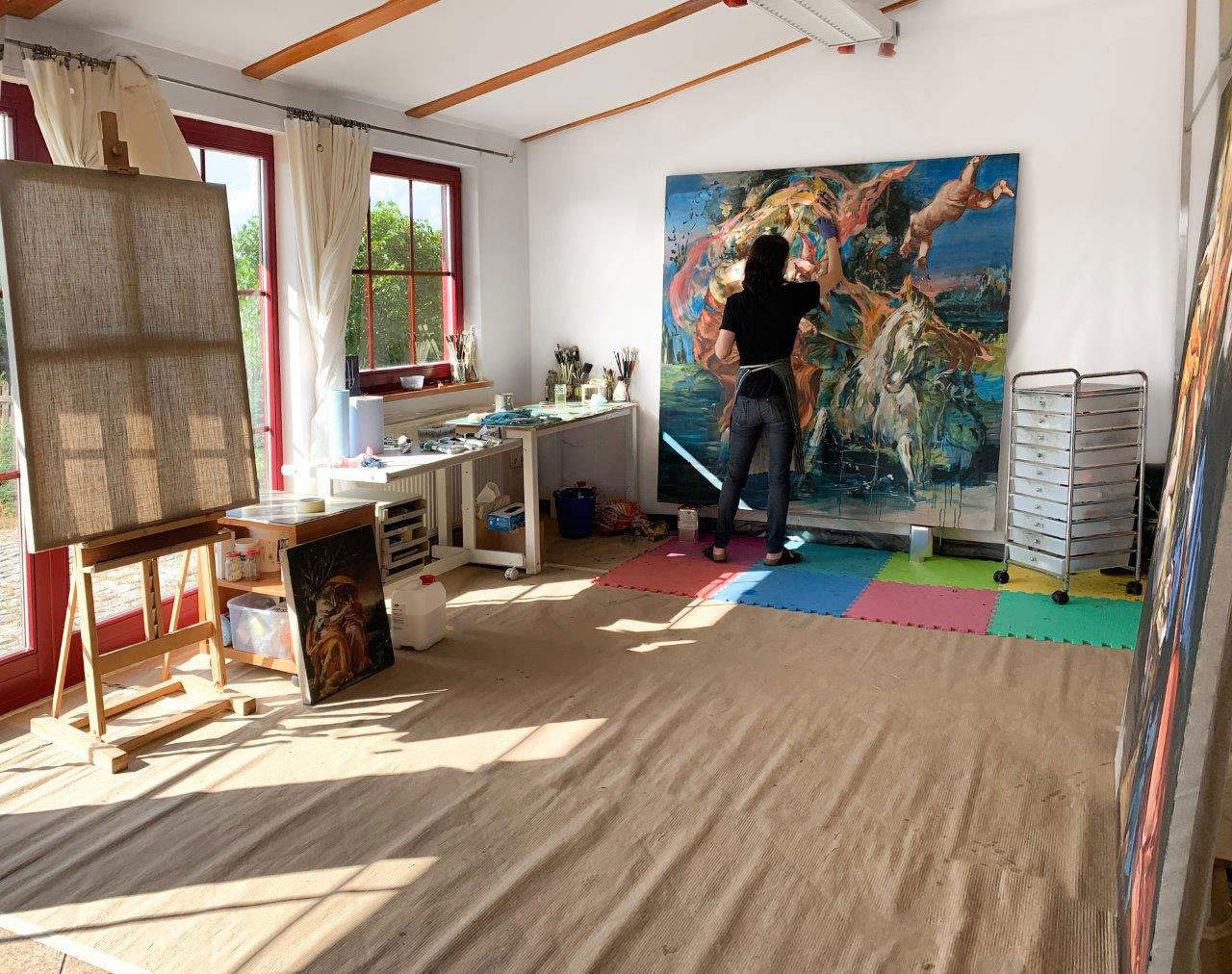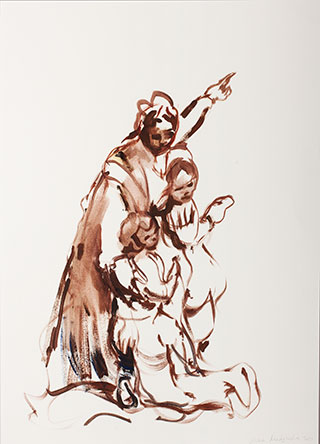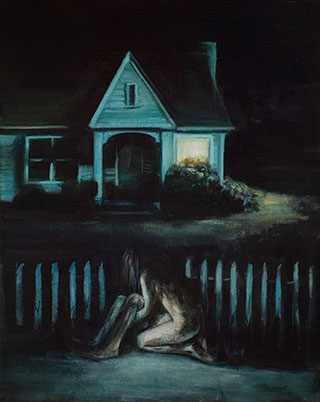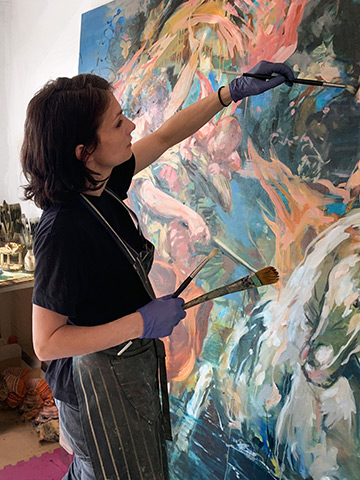Light needs darkness
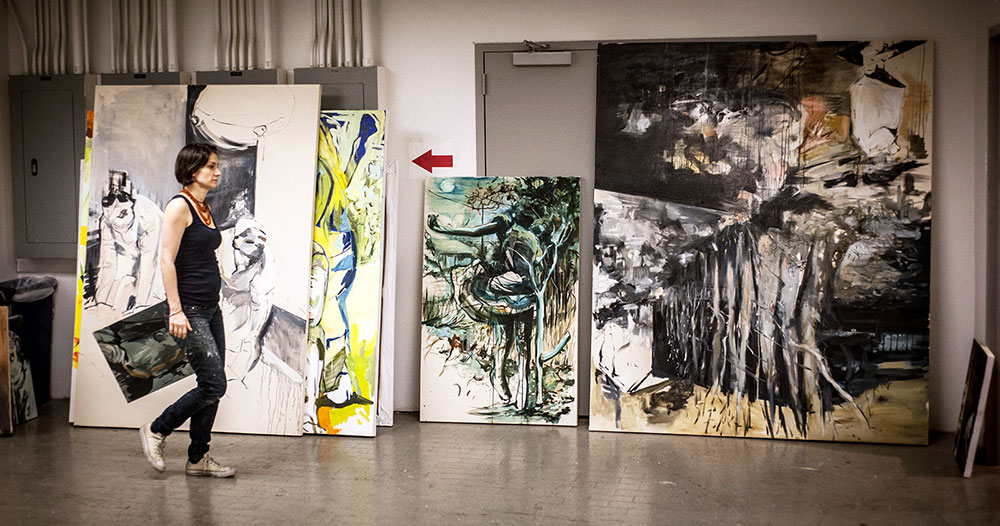
Julia Medyńska’s studios, whether in London, New York or Międzyrzecz, always have scale and class. Large spaces, big windows, always a few paintings on the go, stacks of paint, bundles of brushes, and bottles of solvents. Pieces of carefully cut canvas, as the artist herself puts them on stretcher frames and primes them herself. By looking at these interiors place by place, one can trace the process of creating a painting, and by looking at the surfaces for mixing paints, one can understand the alchemical flair of the painter.
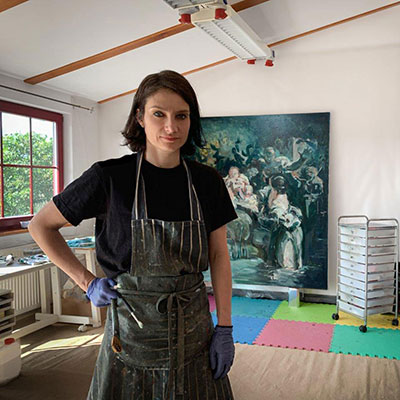
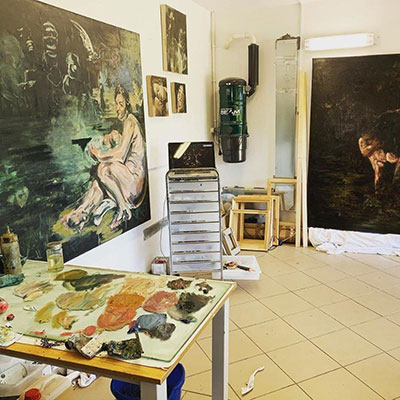
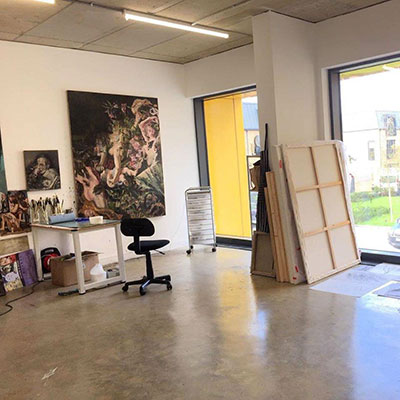
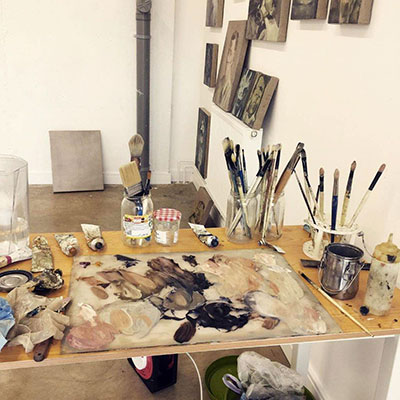

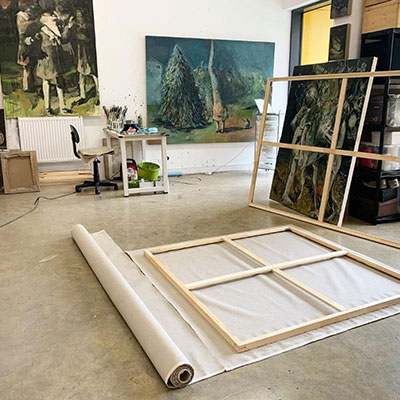
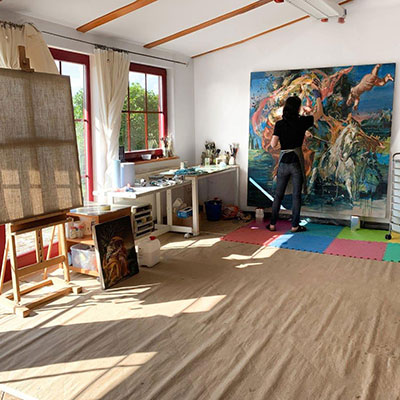
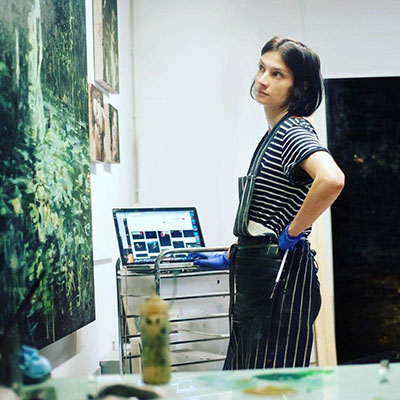
How does a painter like you start the day?
Every morning, while I have my coffee, I start with what I like to call auditions. I open my laptop and look for models and props for my paintings. I browse through every source I know, from Pinterest to serious archives, museum collections, and art collections. I look for reproductions, old photographs, stills from films, images that grab my attention. Characters and objects.
Who and what is likely to win the audition?
I look for contrasts, for strong collisions of light and shadow. Mysterious and unobvious. A surface behind which something is hidden. I love shades of black, but not shallow, superficial ones. Black should be an entrance, an invitation into the depths of the image. When it comes to people, I am interested in figures in motion, often exaggerated, even extreme or ecstatic.
What happens when you find the right “actors”?
I never quite know if a particular image is actually the one I'm looking for. Often in my mind, I ask the figures I have spotted – are you suitable for me, will you make a painting? Sometimes I think I’ve got it, this is it. Then I throw myself at the canvas, paint in suspense for several hours without a break. I walk away a few steps, take a look – and I know that’s not it. Then I say to the character – sorry, I have to let you off the stretching frame. I have to cross you out. And I paint over it or wipe it off with a cloth. Hours of work go to waste. My husband, who watches my work being created, walks by, looks, and can’t believe it – why did you paint it over?! I wouldn’t be able to do that, he reproaches me.
But there is no other way. The search for truth requires painful cuts. Picasso said that in order for a painting to come into being, you often have to throw away its most beloved part.
And what is most beloved to you in art?
Two or three years ago, I fell in love with the Baroque. This period in painting, with its expressiveness and strong contrasts, is unparalleled in the scale of emotions. Nowhere are the shades of black as magnificent, sensuous, variegated as in Baroque paintings. And that theatricality, the poses, the ambiguities!
Why does theatricality fascinate you?
My first profession is acting, and I studied it at New York’s Lee Strasberg Theatre Institute and Neighborhood Playhouse School of the Theatre. I chose painting because I had no patience for auditions and waiting for a role. Now, as a painter, I am the director myself: I choose the actors I want, cast the roles, arrange the set, and I shape and change my performance in the painting at will. Painting is like preparing a play. It’s just that I now enjoy the freedom of a painter.
Your paintings hold many secrets, one of which is the glow that emanates from them. Why do they shine like that?
This is the secret of oil painting. I don’t use acrylic paints, as everyone does today, but the old magic oil technique. Today, nobody wants to paint with oils anymore. It is a forgotten skill: difficult and time-consuming. Oil paintings dry very slowly, and it takes months before they are suitable for transport.
So what is the advantage of oil paintings?
When I tried oils for the first time while studying painting in America, I was shocked. The effect was so different than acrylics! Depth of colour, luminosity – such effects can only be obtained by applying many layers of oil glaze, thin layers of diluted pigment through which the colour of the substrate shines through. Now I’m struggling with the glazes, they are extremely labour intensive, but the effect is worth the effort. My beloved shades of black, which I mix myself, have depth and many hues. It is through the oil technique that I manage to convey the richness, sophistication, and intensity of the colours.
Which moment in painting a picture do you like best?
The start of the painting is wonderful; that is when the emotions are the strongest. I like to begin a painting, which is why, for example, I am now painting eight of them at the same time. I create still lifes according to the old masters, including the so-called hunts. I’ve got a lot of scope there with the blacks.
Why are the blacks so important to you?
In art, I appreciate melancholy, mystery, and drama – all of which are contained within shades of black. But I also fall prey to my tastes. At my last exhibition in the Museum of Międzyrzecz Land, one of the visitors asked: there is so much black in your paintings, do you have a black soul?
Who buys your paintings, who likes them?
You have to like this atmosphere, have a similar inner world. Many people fall in love with my paintings at first sight. They understand that blackness and darkness are necessary for light to emerge.



